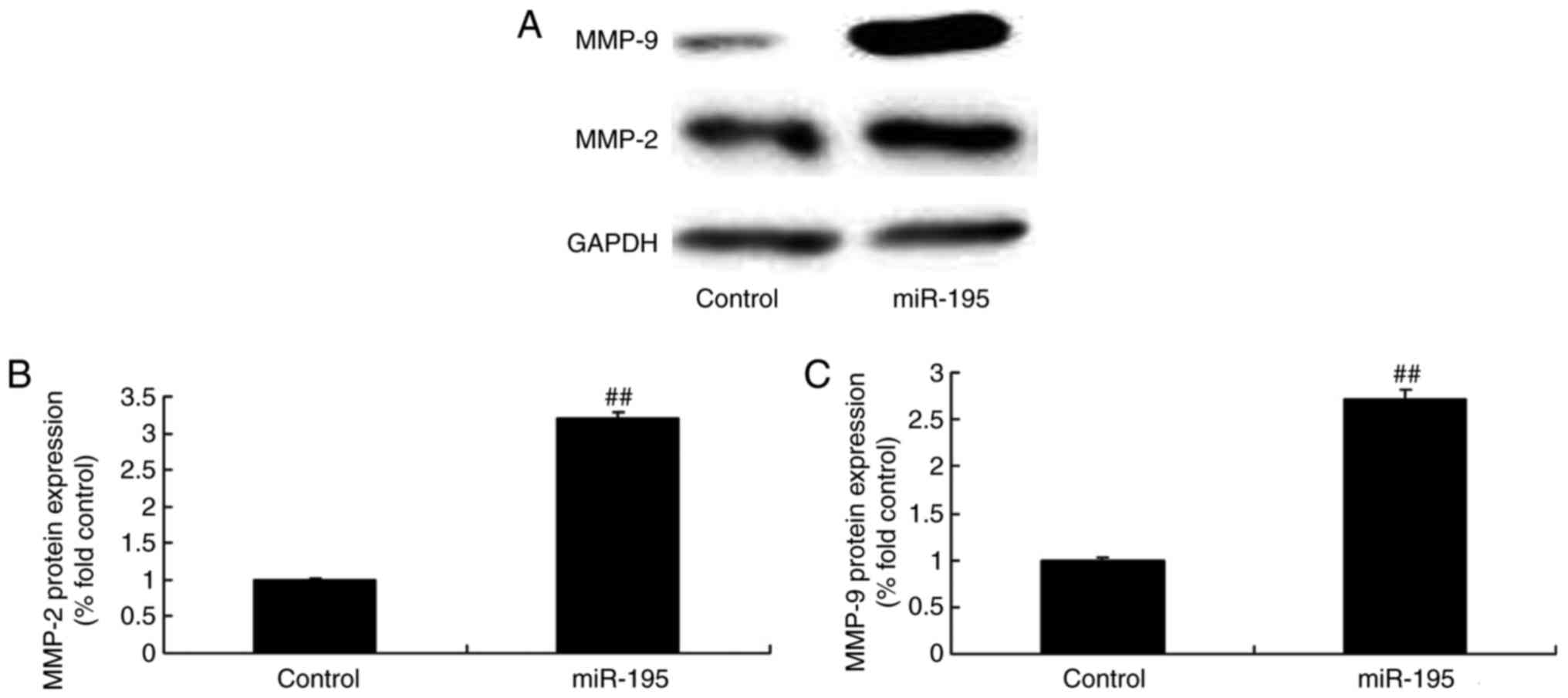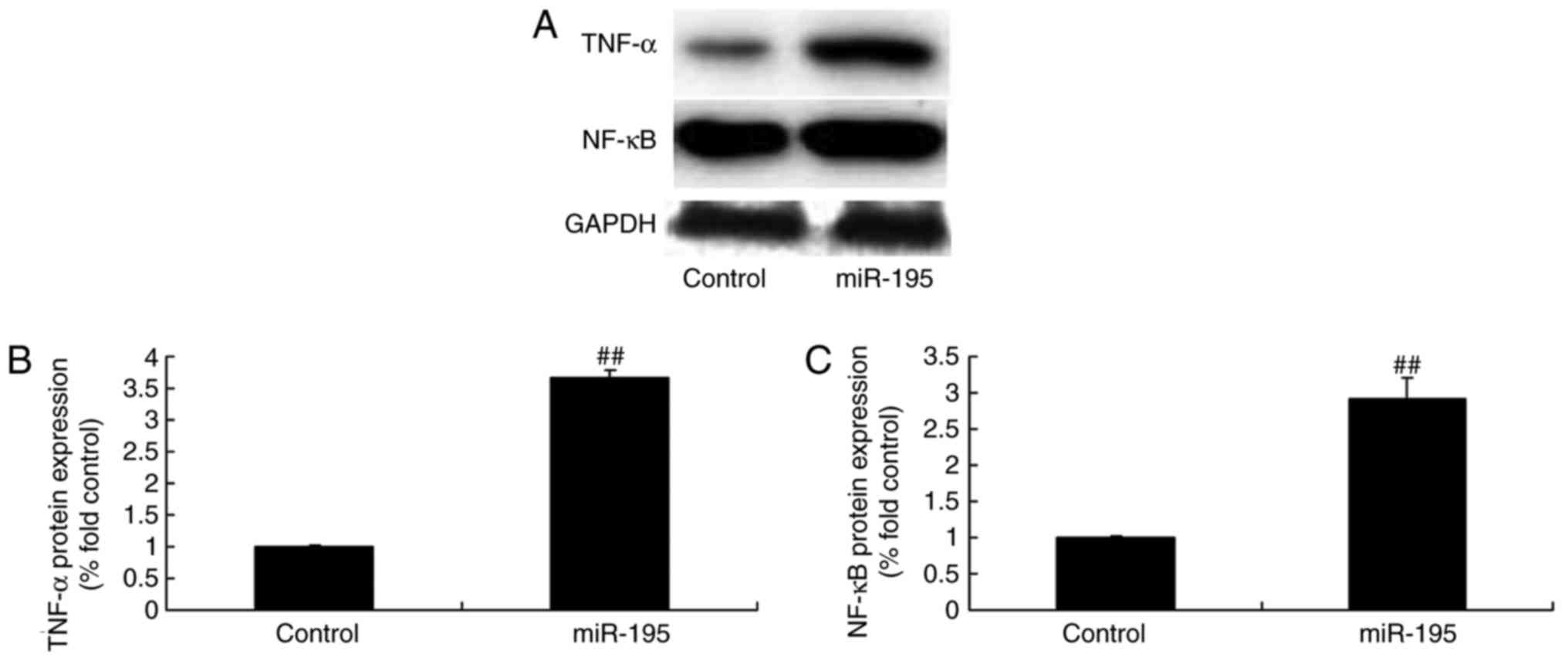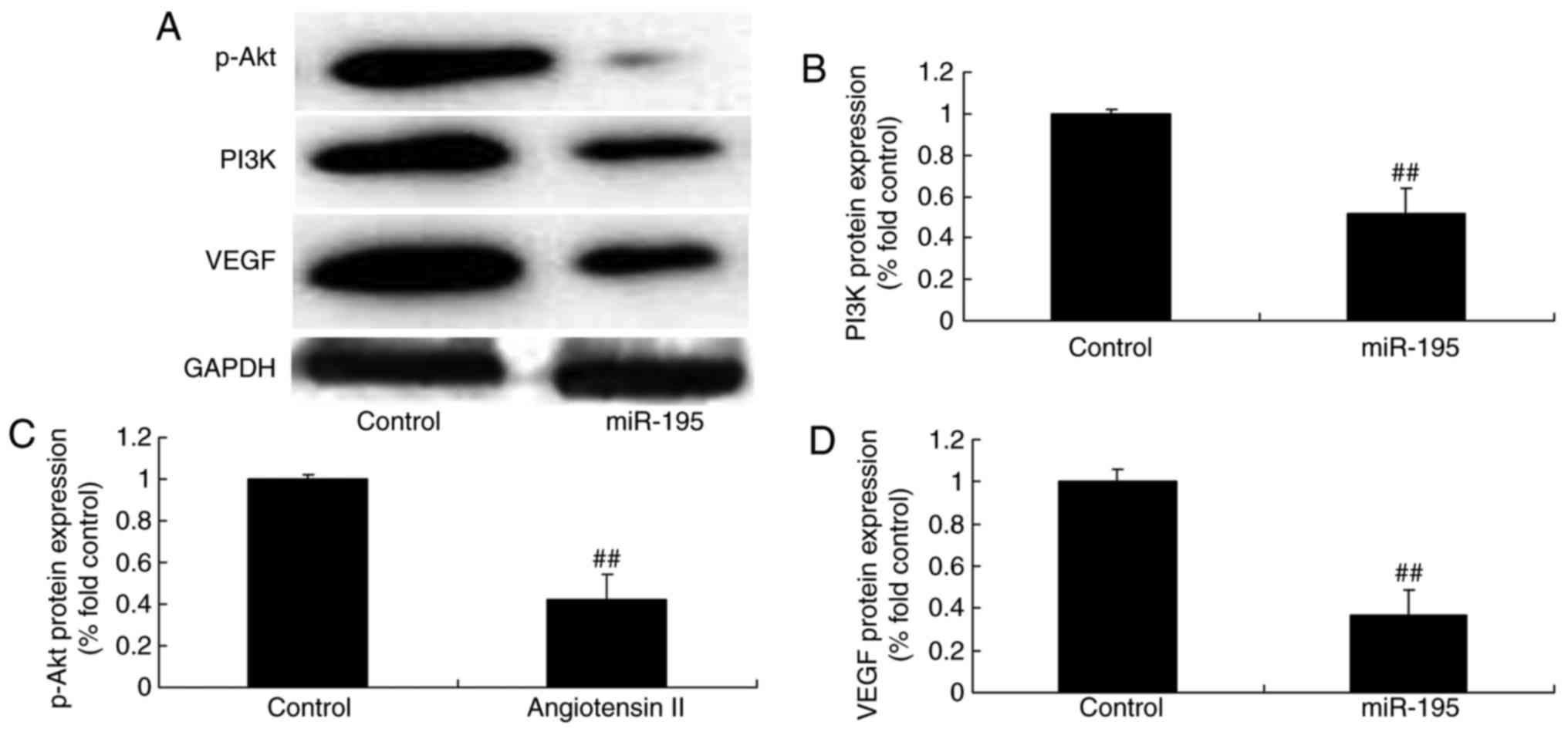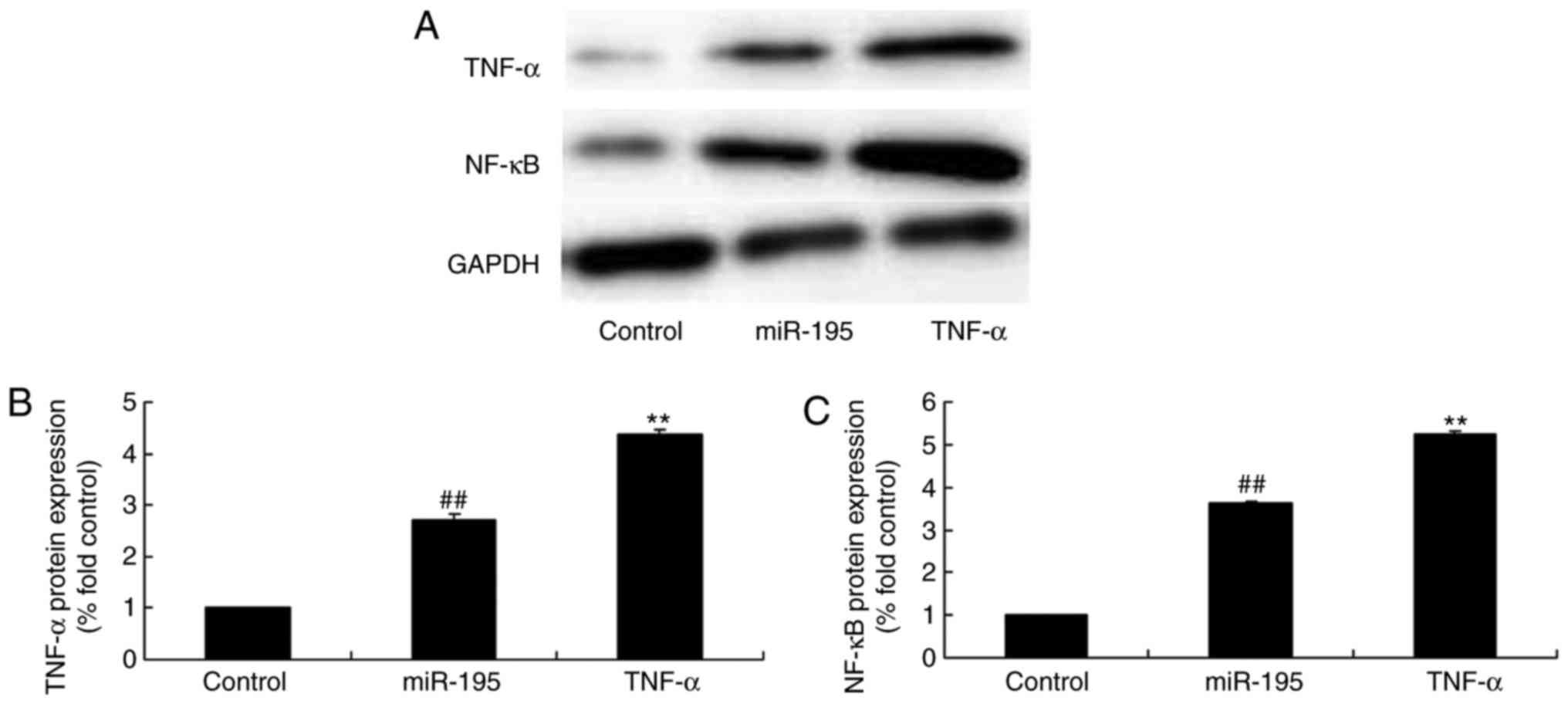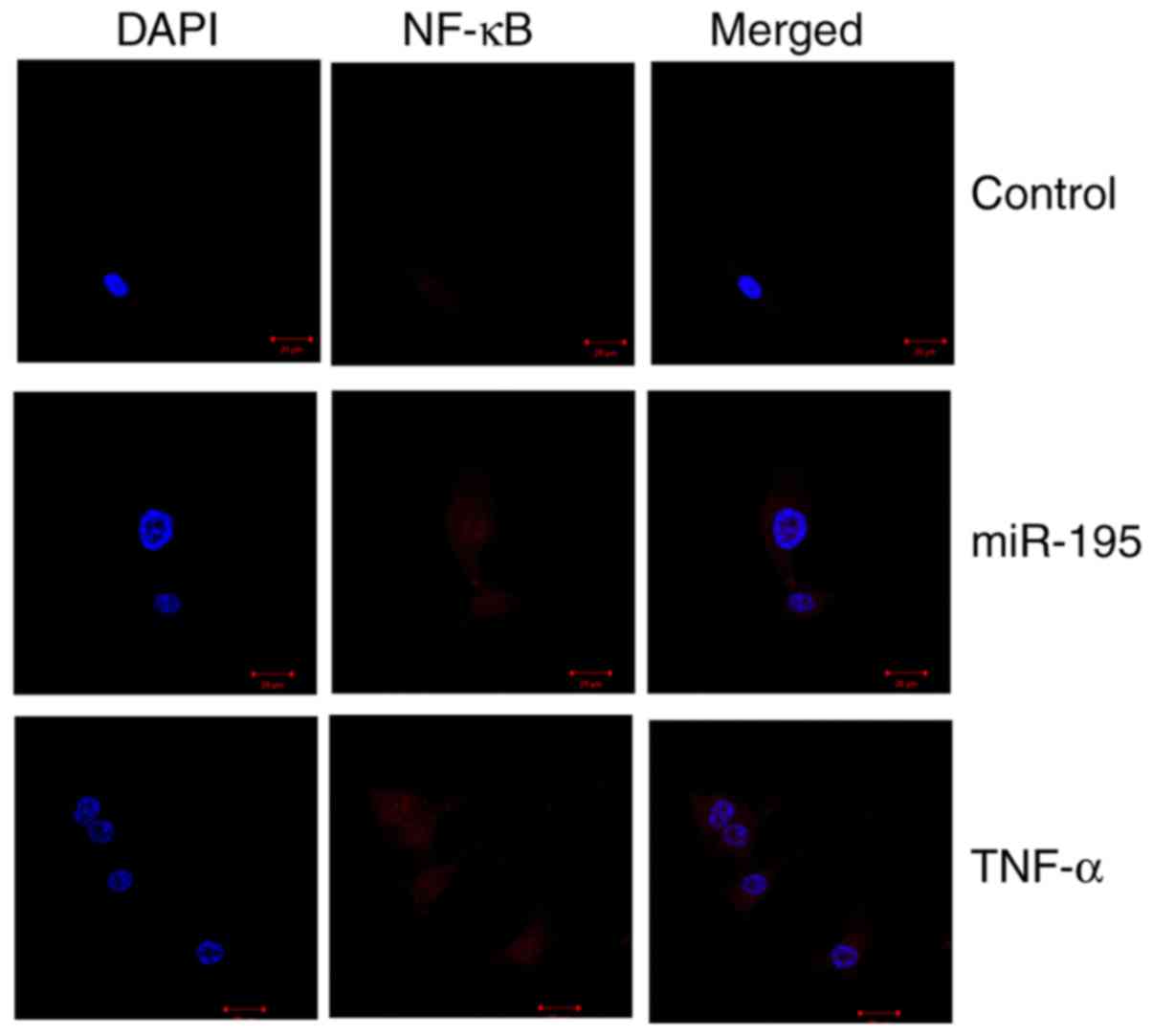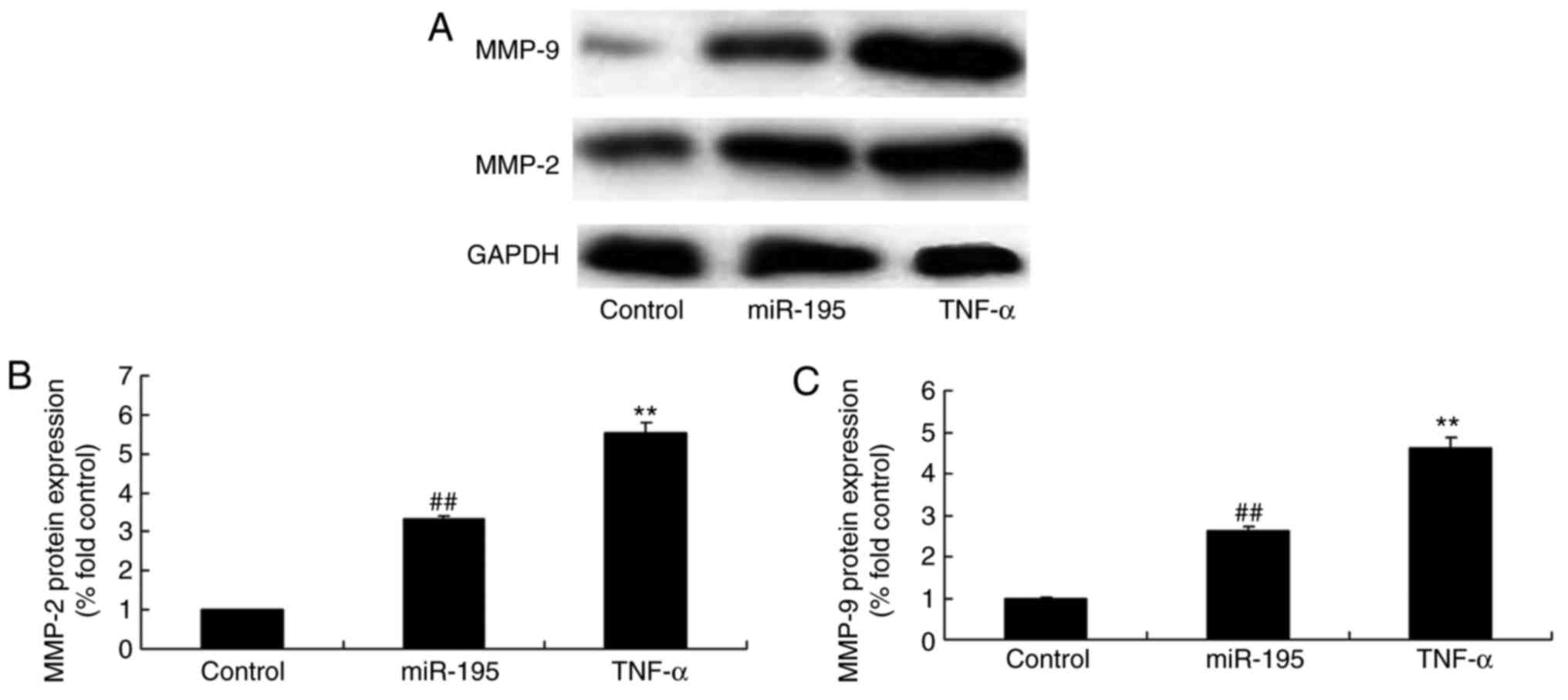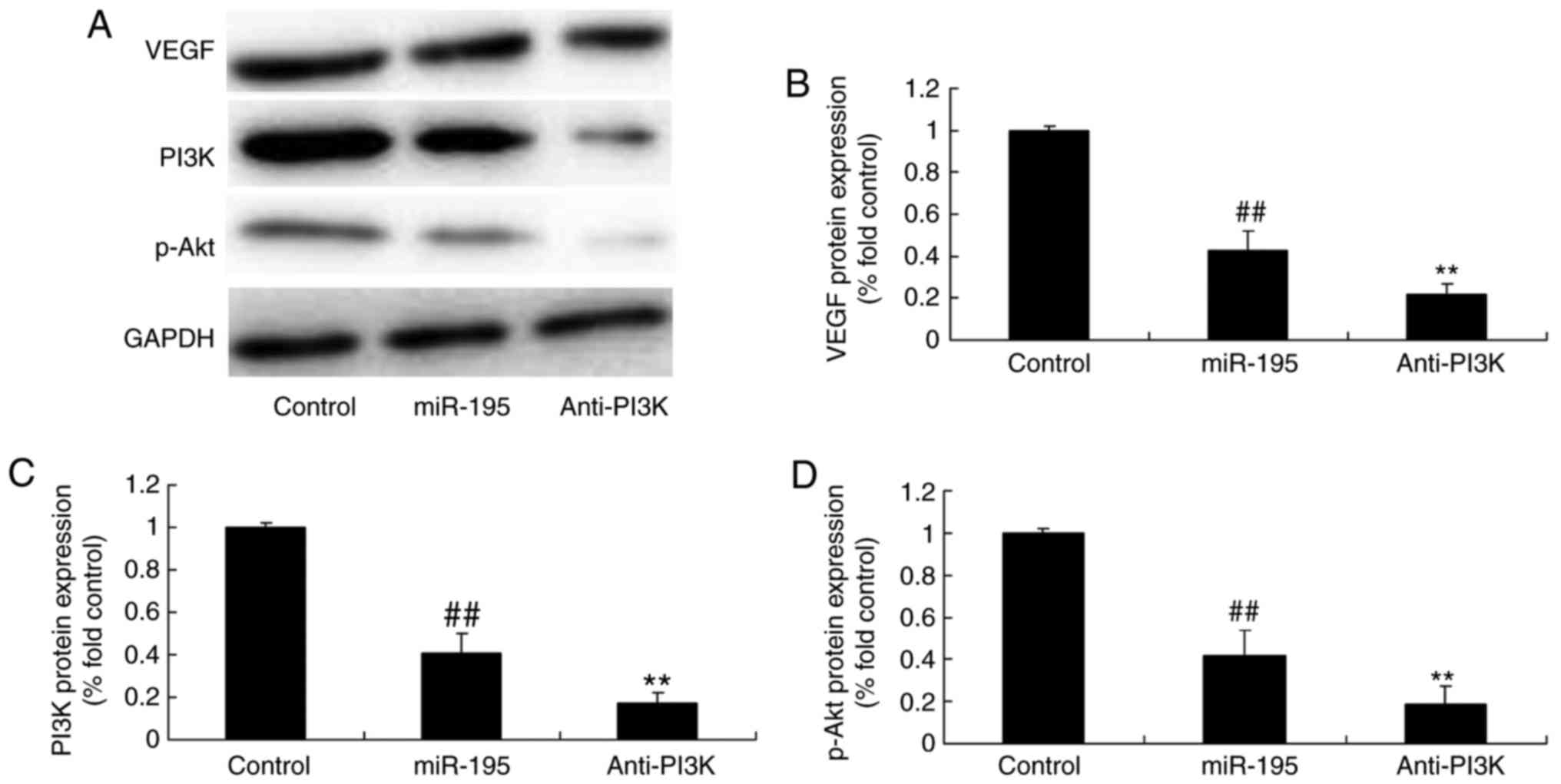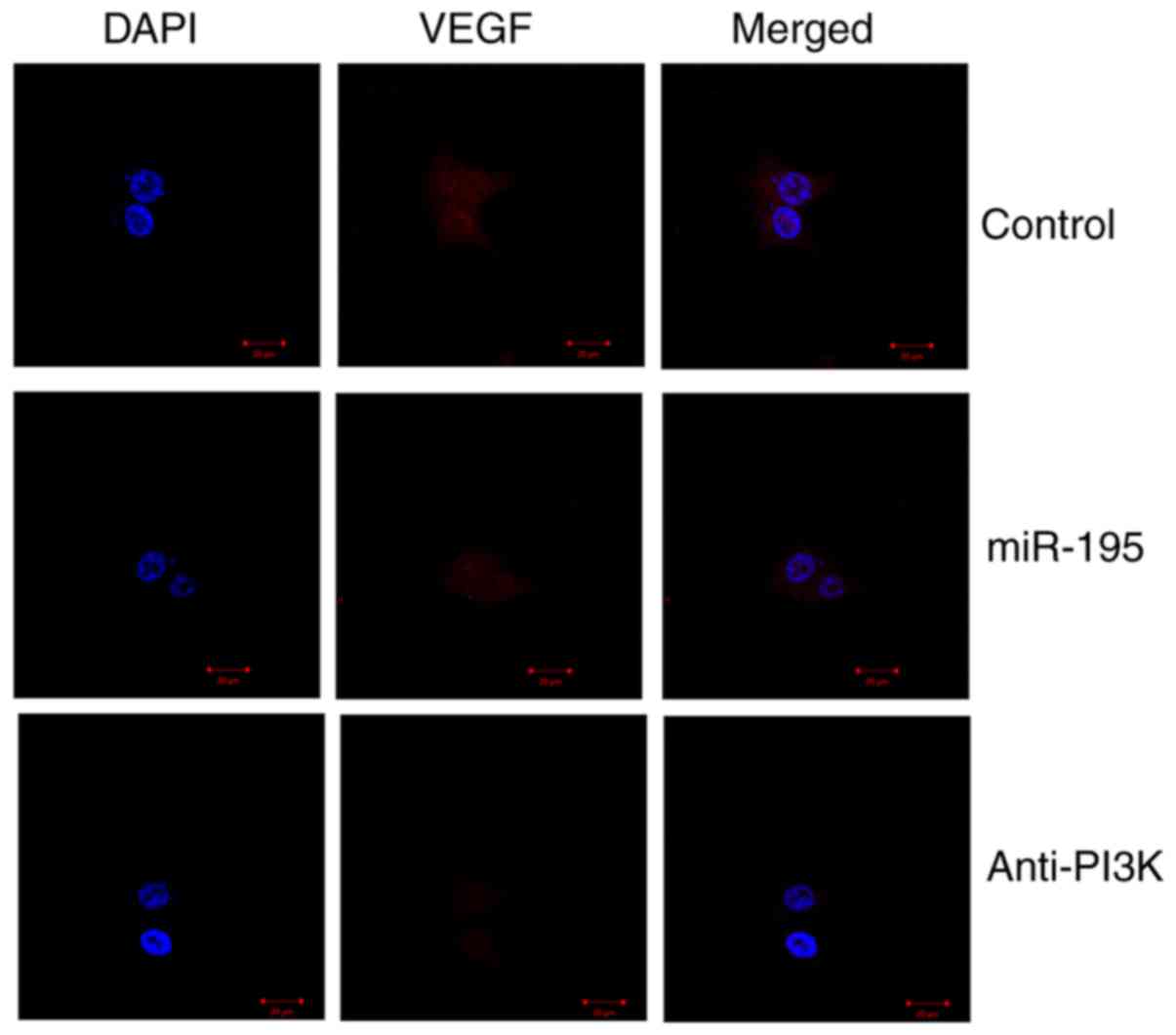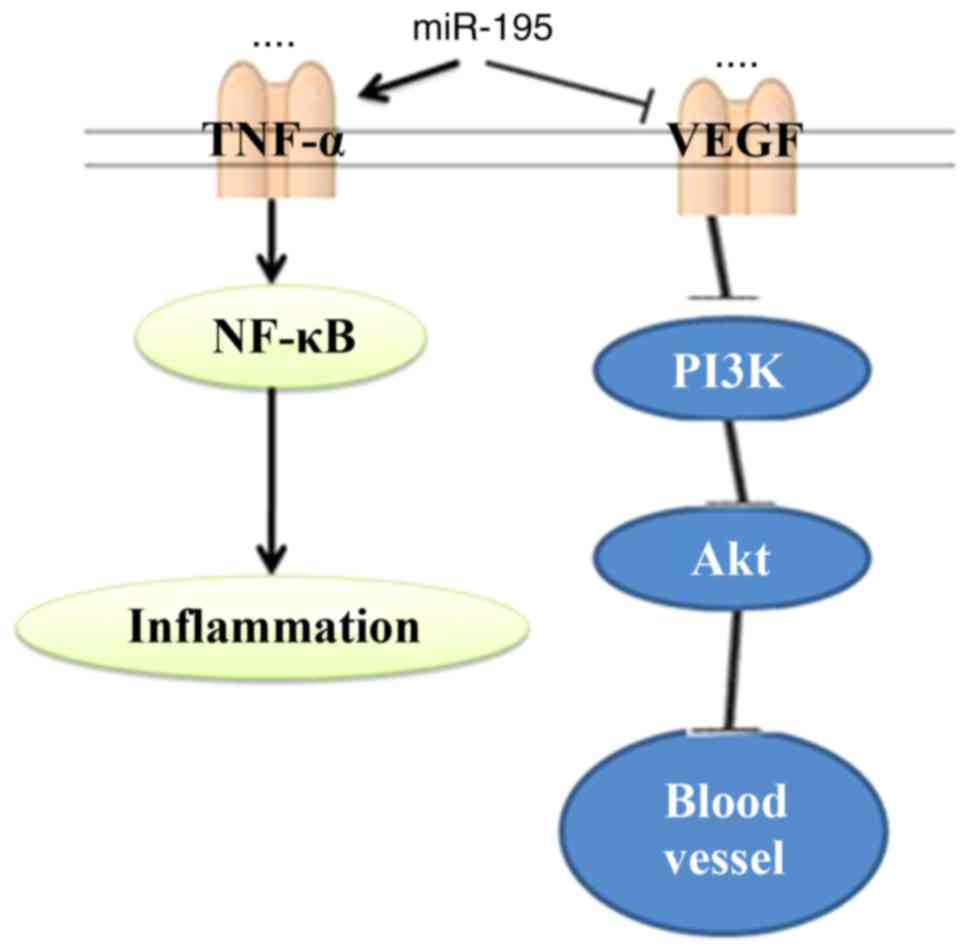|
1
|
Liu J, Zuo SW, Li Y, Jia X, Jia SH, Zhang
T, Song YX, Wei YQ, Xiong J, Hu YH and Guo W: Hyperhomocysteinaemia
is an independent risk factor of abdominal aortic aneurysm in a
Chinese Han population. Sci Rep. 6:179662016. View Article : Google Scholar : PubMed/NCBI
|
|
2
|
Lindeman JH, Abdul-Hussien H, van Bockel
JH, Wolterbeek R and Kleemann R: Clinical trial of doxycycline for
matrix metalloproteinase-9 inhibition in patients with an abdominal
aneurysm: Doxycycline selectively depletes aortic wall neutrophils
and cytotoxic T cells. Circulation. 119:2209–2216. 2009. View Article : Google Scholar : PubMed/NCBI
|
|
3
|
Lindberg S, Zarrouk M, Holst J and
Gottsater A: Inflammatory markers associated with abdominal aortic
aneurysm. Eur Cytokine Netw. 27:75–80. 2016.PubMed/NCBI
|
|
4
|
Ciavarella C, Alviano F, Gallitto E, Ricci
F, Buzzi M, Velati C, Stella A, Freyrie A and Pasquinelli G: Human
vascular wall mesenchymal stromal cells contribute to abdominal
aortic aneurysm pathogenesis through an impaired immunomodulatory
activity and increased levels of matrix metalloproteinase-9. Circ
J. 79:1460–1469. 2015. View Article : Google Scholar : PubMed/NCBI
|
|
5
|
Wang Y, Ait-Oufella H, Herbin O, Bonnin P,
Ramkhelawon B, Taleb S, Huang J, Offenstadt G, Combadière C, Rénia
L, et al: TGF-beta activity protects against inflammatory aortic
aneurysm progression and complications in angiotensin II-infused
mice. J Clin Invest. 120:422–432. 2010. View Article : Google Scholar : PubMed/NCBI
|
|
6
|
Wang L, Wang B, Li H, Lu H, Qiu F, Xiong
L, Xu Y, Wang G, Liu X, Wu H and Jing H: Quercetin, a flavonoid
with anti-inflammatory activity, suppresses the development of
abdominal aortic aneurysms in mice. Eur J Pharmacol. 690:133–141.
2012. View Article : Google Scholar : PubMed/NCBI
|
|
7
|
Biros E, Moran CS, Wang Y, Walker PJ,
Cardinal J and Golledge J: microRNA profiling in patients with
abdominal aortic aneurysms: The significance of miR-155. Clin Sci
(Lond). 126:795–803. 2014. View Article : Google Scholar
|
|
8
|
Maegdefessel L, Azuma J and Tsao PS:
MicroRNA-29b regulation of abdominal aortic aneurysm development.
Trends Cardiovasc Med. 24:1–6. 2014. View Article : Google Scholar
|
|
9
|
Carvalho LS: Can microRNAs improve
prediction of abdominal aortic aneurysm growth? Atherosclerosis.
256:131–133. 2017. View Article : Google Scholar
|
|
10
|
Spin JM and Tsao PS: Battle of the bulge:
miR-195 versus miR-29b in aortic aneurysm. Circ Res. 115:812–813.
2014. View Article : Google Scholar : PubMed/NCBI
|
|
11
|
Zampetaki A, Attia R, Mayr U, Gomes RS,
Phinikaridou A, Yin X, Langley SR, Willeit P, Lu R, Fanshawe B, et
al: Role of miR-195 in aortic aneurysmal disease. Circ Res.
115:857–866. 2014. View Article : Google Scholar : PubMed/NCBI
|
|
12
|
Kaneko H, Anzai T, Takahashi T, Kohno T,
Shimoda M, Sasaki A, Shimizu H, Nagai T, Maekawa Y, Yoshimura K, et
al: Role of vascular endothelial growth factor-A in development of
abdominal aortic aneurysm. Cardiovasc Res. 91:358–367. 2011.
View Article : Google Scholar : PubMed/NCBI
|
|
13
|
Wolanska M, Bankowska-Guszczyn E,
Sobolewski K and Kowalewski R: Expression of VEGFs and its
receptors in abdominal aortic aneurysm. Int Angiol. 34:520–528.
2015.PubMed/NCBI
|
|
14
|
Yu B, Liu L, Sun H and Chen Y: Long
noncoding RNA AK056155 involved in the development of Loeys-Dietz
syndrome through AKT/PI3K signaling pathway. Int J Clin Exp Pathol.
8:10768–10775. 2015.PubMed/NCBI
|
|
15
|
Walsh SR, Sadat U, Boyle JR, Tang TY,
Lapsley M, Norden AG and Gaunt ME: Remote ischemic preconditioning
for renal protection during elective open infrarenal abdominal
aortic aneurysm repair: Randomized controlled trial. Vasc
Endovascular Surg. 44:334–340. 2010. View Article : Google Scholar : PubMed/NCBI
|
|
16
|
Karlsson L, Bergqvist D, Lindbäck J and
Pärsson H: Expansion of small-diameter abdominal aortic aneurysms
is not reflected by the release of inflammatory mediators IL-6,
MMP-9 and CRP in plasma. Eur J Vasc Endovasc Surg. 37:420–424.
2009. View Article : Google Scholar : PubMed/NCBI
|
|
17
|
Bruegger D, Bauer A, Rehm M, Niklas M,
Jacob M, Irlbeck M, Becker BF and Christ F: Effect of hypertonic
saline dextran on acid-base balance in patients undergoing surgery
of abdominal aortic aneurysm. Crit Care Med. 33:556–563. 2005.
View Article : Google Scholar : PubMed/NCBI
|
|
18
|
Muehling BM, Ortlieb L, Oberhuber A and
Orend KH: Fast track management reduces the systemic inflammatory
response and organ failure following elective infrarenal aortic
aneurysm repair. Interact Cardiovasc Thorac Surg. 12:784–788. 2011.
View Article : Google Scholar : PubMed/NCBI
|
|
19
|
Cai C, Chen QB, Han ZD, Zhang YQ, He HC,
Chen JH, Chen YR, Yang SB, Wu YD, Zeng YR, et al: miR-195 inhibits
tumor progression by targeting RPS6KB1 in human prostate cancer.
Clin Cancer Res. 21:4922–4934. 2015. View Article : Google Scholar : PubMed/NCBI
|
|
20
|
Wanhainen A, Mani K, Vorkapic E, De Basso
R, Björck M, Länne T and Wågsäter D: Screening of circulating
microRNA biomarkers for prevalence of abdominal aortic aneurysm and
aneurysm growth. Atherosclerosis. 256:82–88. 2017. View Article : Google Scholar
|
|
21
|
Davis FM, Rateri DL and Daugherty A:
Abdominal aortic aneurysm: Novel mechanisms and therapies. Curr
Opin Cardiol. 30:566–573. 2015. View Article : Google Scholar : PubMed/NCBI
|
|
22
|
Chen G, Cao S, Liu F and Liu Y: miR-195
plays a role in steroid resistance of ulcerative colitis by
targeting Smad7. Biochem J. 471:357–367. 2015. View Article : Google Scholar : PubMed/NCBI
|
|
23
|
Mi T, Nie B, Zhang C and Zhou H: The
elevated expression of osteopontin and NF-kappaB in human aortic
aneurysms and its implication. J Huazhong Univ Sci Technolog Med
Sci. 31:602–607. 2011. View Article : Google Scholar : PubMed/NCBI
|
|
24
|
Zhang F, Banker G, Liu X, Suwanabol PA,
Lengfeld J, Yamanouchi D, Kent KC and Liu B: The novel function of
advanced glycation end products in regulation of MMP-9 production.
J Surg Res. 171:871–876. 2011. View Article : Google Scholar
|
|
25
|
Ding J, Huang S, Wang Y, Tian Q, Zha R,
Shi H, Wang Q, Ge C, Chen T, Zhao Y, et al: Genome-wide screening
reveals that miR-195 targets the TNF-alpha/NF-kappaB pathway by
down-regulating IkappaB kinase alpha and TAB3 in hepatocellular
carcinoma. Hepatology. 58:654–666. 2013. View Article : Google Scholar : PubMed/NCBI
|
|
26
|
Nishibe T, Dardik A, Kondo Y, Kudo F, Muto
A, Nishi M, Nishibe M and Shigematsu H: Expression and localization
of vascular endothelial growth factor in normal abdominal aorta and
abdominal aortic aneurysm. Int Angiol. 29:260–265. 2010.PubMed/NCBI
|
|
27
|
Almeida MI, Silva AM, Vasconcelos DM,
Almeida CR, Caires H, Pinto MT, Calin GA, Santos SG and Barbosa MA:
miR-195 in human primary mesenchymal stromal/stem cells regulates
proliferation, osteogenesis and paracrine effect on angiogenesis.
Oncotarget. 7:7–22. 2016. View Article : Google Scholar :
|
|
28
|
Zhang S, Kan X, Li Y, Li P, Zhang C, Li G,
Du J and You B: Deficiency of γδT cells protects against abdominal
aortic aneurysms by regulating phosphoinositide 3-kinase/AKT
signaling. J Vasc Surg. S0741–S5214(16): 31854–7. 2016.
|
|
29
|
Keppler-Noreuil KM, Parker VE, Darling TN
and Martinez-Agosto JA: Somatic overgrowth disorders of the
PI3K/AKT/mTOR pathway & therapeutic strategies. Am J Med Genet
C Semin Med Genet. 172:402–421. 2016. View Article : Google Scholar : PubMed/NCBI
|
|
30
|
Sun P, Wang L, Lu Y, Liu Y, Li L, Yin L,
Zhang C, Zhao W, Shen B and Xu W: MicroRNA-195 targets VEGFR2 and
has a tumor suppressive role in ACHN cells via PI3K/Akt and
Raf/MEK/ERK signaling pathways. Int J Oncol. 49:1155–1163. 2016.
View Article : Google Scholar : PubMed/NCBI
|





